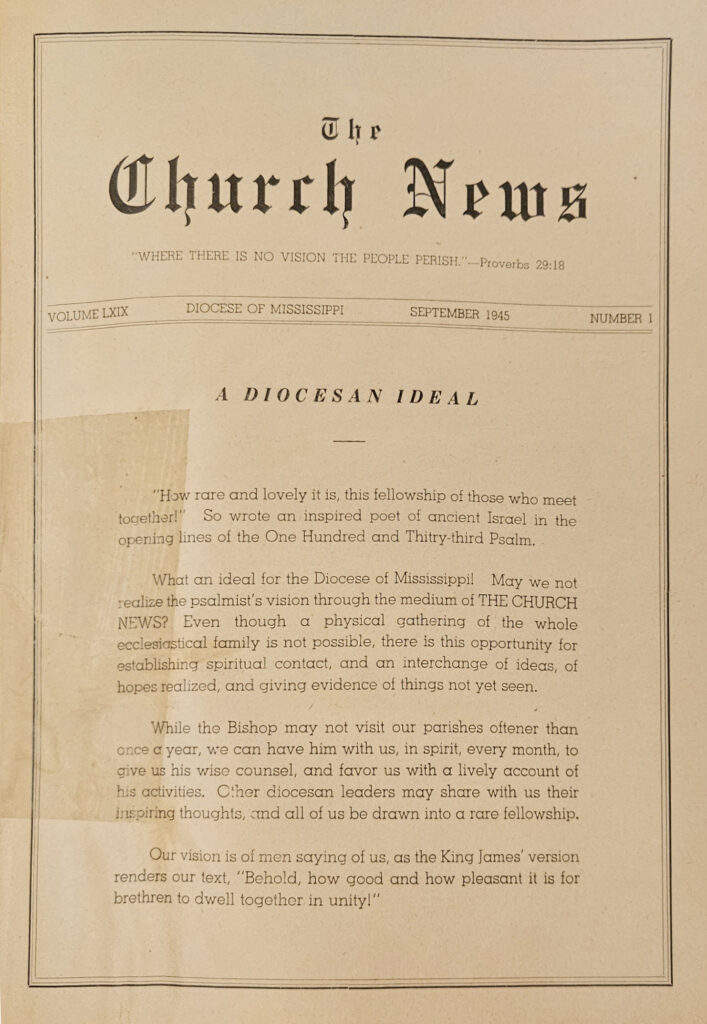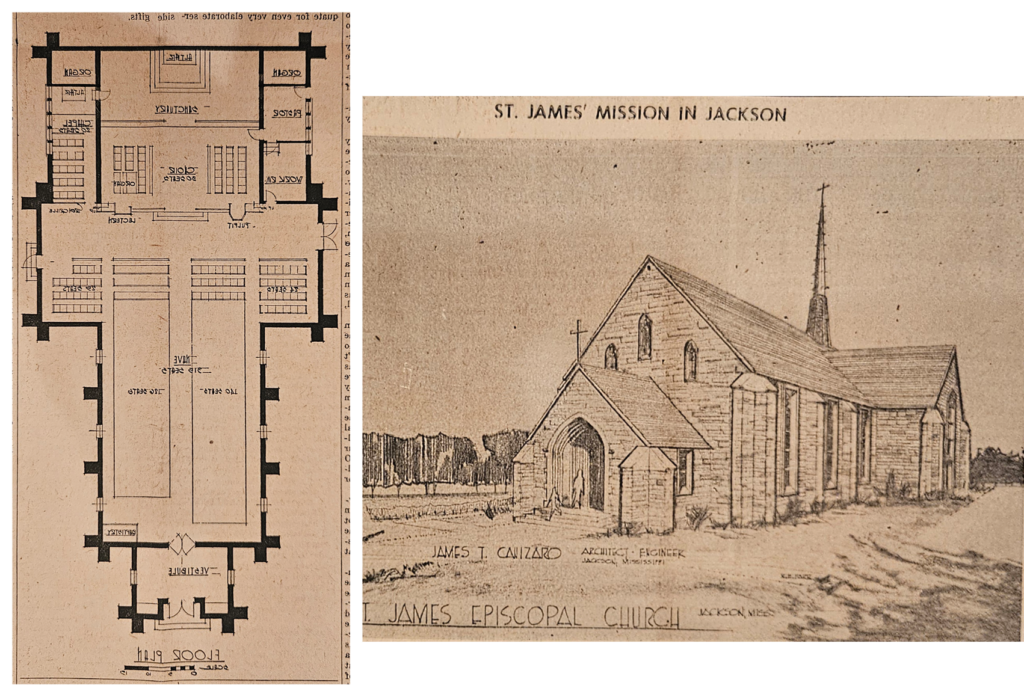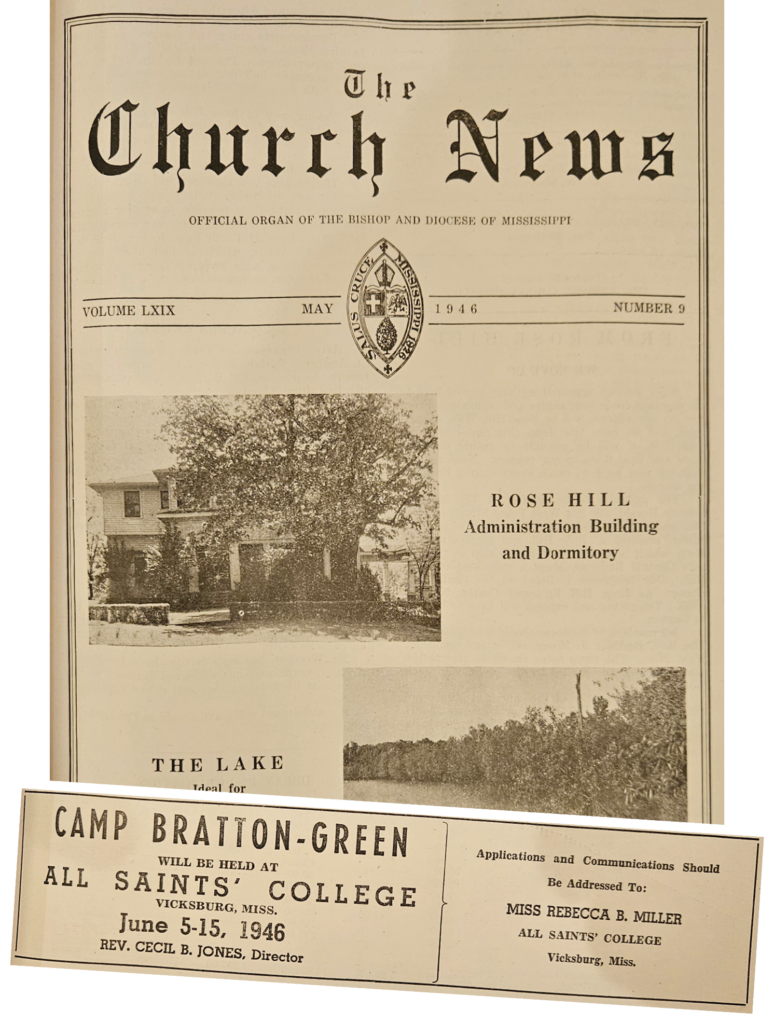
In 1874, Trinity, Natchez had been a parish at the corner of Commerce and Washington Streets for a little over half a century. That year, Trinity discerned the need for a better means of communication within the parish, and a parish newsletter was born.1 That publication, with the informative and unadorned title The Church News (TCN), would, within a decade, expand its coverage and be adopted by the Diocese of Mississippi as its official paper.
The Reverend Alexander Marks, then-rector of Trinity Natchez, was its first editor.
As one of the very oldest parishes in the diocese (in fact, four years older than the diocese itself), Trinity had always been a leader for Episcopalians in Mississippi, and Natchez remained the home of The Church News throughout much of the 19th century. Later, at various times, the paper was published at local presses throughout the state, including Yazoo City, Starkville, Canton, and, finally, Jackson.
In 1991, 117 years after its founding, The Church News was, of course, rechristened as The Mississippi Episcopalian (TME).

But back in 1882, the paper made its official transition from a parish to a diocesan organ when council adopted a resolution stating “that the confidence and assistance of the Diocese be given to The Church News, published in the city of Natchez.”
The following year, a committee was established to oversee the publication, and Bishop William Mercer Green shared his enthusiasm in his address:
“Before I close,” he said, “let me say a word in relation to that excellent paper, The Church News, published at Natchez. No diocese has juster cause to be proud of its periodical than we. It has been ably conducted from the beginning; but will soon appear in a form of increasing ability and interest.”
At that time, the committee for TCN did have truly grand expectations. At the 1884 council, their report implied a hope that the paper would grow even beyond the diocese, perhaps to cover the entire American Church, or at least Episcopalians in the Southern and Southwestern states.

Much of this ambition stemmed from the fact that then-bishop coadjutor Hugh Miller Thompson was an experienced editor, having helmed the American Churchman in the 1860s.
“With the aid of his great influence, the ultimate outgrowth of this enterprise may be a journal of still wider range…” wrote the committee in its report, “which has, besides the general subjects that concern all, to deal with such special interests as those of the University of the South, the spiritual needs of the colored race, and others arising from peculiar ecclesiastical and social conditions.”
Thompson himself offered a bit more modest appraisal of the paper and its prospects:
“Let me speak of a diocesan interest which, in some respects, I consider second to none,” he said at council in 1885. “The Church News is not a very wonderful paper, indeed, and doesn’t try to be. But it is ours, our diocesan organ.”
For Thompson, one important result of TCN was its ability to make his life easier by saving him time on his correspondence:
“This little sheet is our official organ,” he went on. “The bishops and diocesan officers publish their official announcements in it. And for myself, dear brethren, I think it is very little to ask, that it be taken in every parish. I cannot afford to keep a secretary, and it is too much to ask, that, in a life so entirely occupied, I should be required also to write letters and bulletins. Published in the official paper, I am saved that.”
At first, during the decade of the 1880s, it was a struggle for TCN to find support and get people to subscribe to and read it. The arguments made by the TCN committee read much like those to be heard over a century later with the advent of the internet.

“That the press is not like the font, the altar, or the pulpit . . . may be freely admitted,” members wrote in 1884. “But to reject the use of the press as an adjunct in the work of the church . . . would be as unreasonable as to refuse to avail ourselves of the agency of steam in Episcopal visitations and missionary journeys, because the primitive Apostles traveled on foot . . . or to condemn the use of paper, because the Epistles of St. Paul were written on parchment.”
Thompson and the committee succeeded, however, and TCN survived and thrived. Remarkably, TCN did not cease publication during either of the World Wars. The editorship passed among clergymen, including Bishop Duncan M. Gray, Sr., who ran the paper while simultaneously running the diocese. For much of its history, TCN published monthly updates on parishes around the state, sent in by correspondents.
Also, for many years, one of TCN’s functions was to encourage parishes to support the diocese financially, by printing a list of assessments and payments. A few column inches were often dedicated to reminding parishioners to to pay their subscriptions to the paper as well. Throughout the 19th century, a subscription cost 50 cents, a fact often splashed above the masthead as a reminder.
As technology evolved, the purpose and format of TCN also changed. The 1991 transition to the name The Mississippi Episcopalian, coincided with an era when fax, phone, and a fledgling invention called the internet were changing the way information was shared.
Most recently, under the visions of Bishops Seage and Wells, TME has transitioned from newspaper to magazine, and its primary mission from one of information to one of inspiration. As the official magazine of the Episcopal Diocese of Mississippi looks ahead to year 151, it does so ready to tell the stories of the Episcopalians of this state and how their witness to Christ continues to transform the world, just as it did back in 1874.

